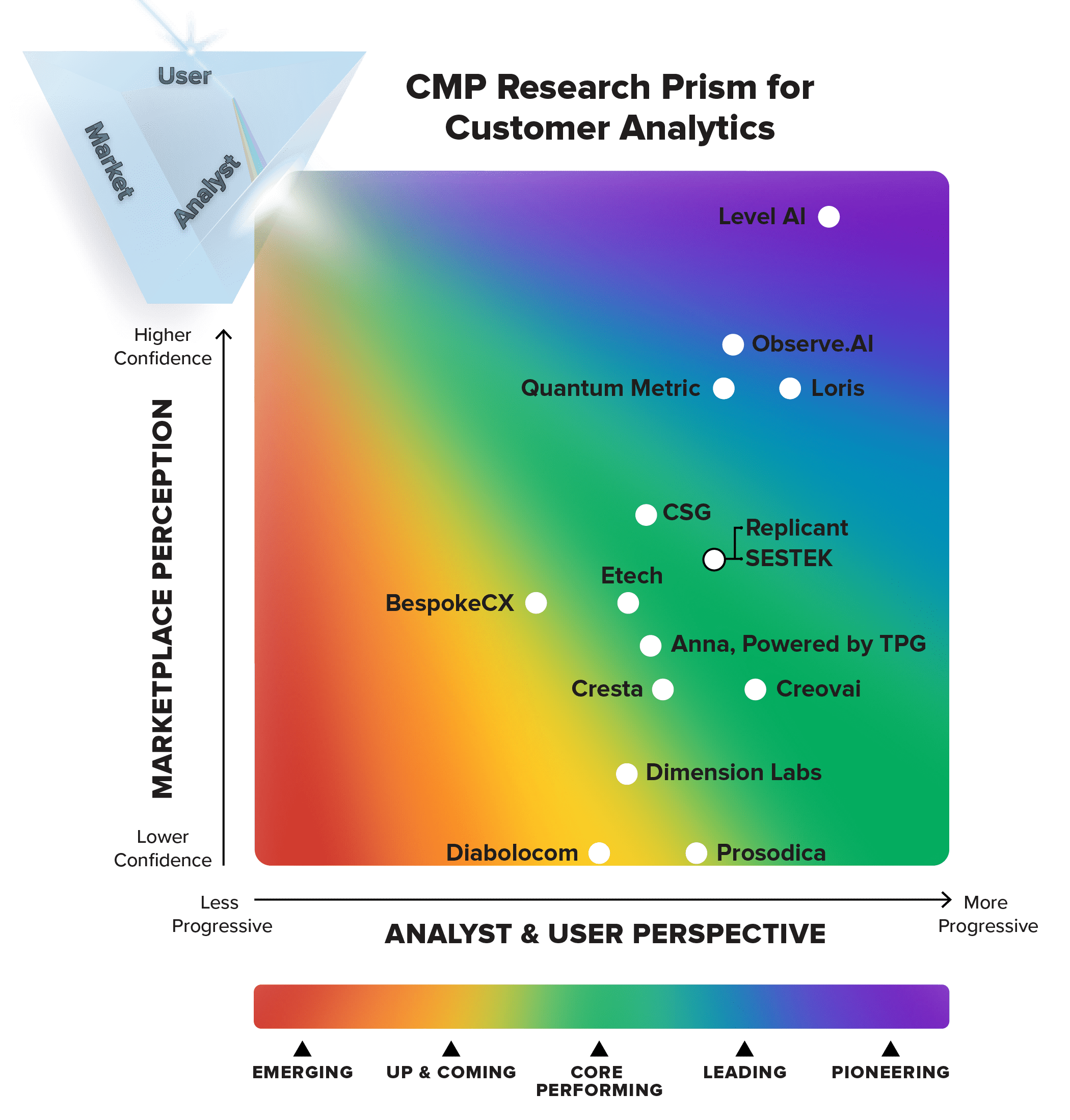
Call center technology is evolving with AI and automation, transforming basic helplines into strategic communication hubs that enhance efficiency and personalization. Future trends point towards greater AI integration, omnichannel engagement, and cloud migration, driving improved customer experiences and operational agility.
- Introduction to Call Center Technology
- What is Call Center Technology?
- VoIP Telephony
- ACD and Call Routing
- Interactive Voice Response (IVR)
- Call Queuing
- Call Recording
- Real-time Call Monitoring
- Reporting and Analytics
- Auto Dialing
- Computer Telephony Integration (CTI)
- Emerging Call Center Technology Trends
- Power up Your Call Center with Advanced Call Center Technology
- FAQ
Introduction to Call center Technology

Want to transform your customer service from a basic helpline into a strategic advantage? This guide walks you through modern call center technology—from AI-powered insights to advanced phone systems. By the end, you’ll know how to deliver faster resolutions, personalize interactions, and stay ahead in retail, financial services, or any industry that relies on strong customer connections.
A New Era of Tech and Communication
Call centers have evolved from simple call-handling units into full-scale communication hubs powered by AI. Today’s systems can predict call volumes, detect emotion in real time, and offload routine tasks so human agents can focus on complex issues. For instance, an IBM AI-enabled IVR at a major health insurer now correctly processes up to 95% of spoken sentences—an achievement that seemed impossible just a few years ago.
Fact
A study by GetVoIP notes that modern IVRs can handle twice as many interactions as a single agent and can be 48 times cheaper.
The Role of AI in Modern Call Centers
AI improves efficiency by automatically routing calls to the right agent and predicting the best next steps, trimming valuable minutes off each customer interaction. Insights from Dialpad’s “State of AI in Customer Service Report” show many businesses rely on AI to refine their processes. A retailer can instantly connect shoppers to product experts, while a financial institution can flag suspicious activity and forward urgent calls to specialized teams.
Yet human agents still matter. A Forbes perspective highlights that empathy and rapport can’t be automated. Experts predict an ecosystem where automated systems handle easy tasks like processing returns, while humans skillfully manage sensitive or high-stakes conversations. This fusion of AI speed and human warmth positions call centers as the frontline of customer engagement for years to come.
What is Call Center Technology?
Defining the Technology
Call center technology encompasses tools that handle interactions across phone, chat, and email. These include intelligent routing software, automated tasks, and AI-enhanced features like call recording and note-taking. Together, they minimize wait times, give agents real-time customer data, and help managers oversee performance more effectively.
Key Tools and Benefits
Many solutions offer call routing, detailed caller history, and CRM integration. For example, Salesforce Service Cloud combines analytics with omnichannel support to ensure customers feel heard. Studies show 75% of people will recommend a company they believe delivers excellent service. But 26% of agents say they lack essential customer context—data that modern platforms can provide.
By automating repetitive steps, AI tools reduce mistakes and free agents to handle tougher issues. Interactive voice response (IVR) manages simple queries, such as store hours or account balances. Automated transcripts and performance stats help managers pinpoint trends and training needs. Providers like Kustomer and Genesys offer cloud-based solutions that adjust to business demands quickly, optimizing costs and enhancing service quality for everything from online retail to financial advice.
VoIP Telephony

How It Works
Voice over Internet Protocol (VoIP) sends calls through the internet instead of traditional phone lines. This means companies can use their existing internet connection instead of paying for extra hardware. Whether you have multiple retail locations or a globally distributed financial team, VoIP allows agents to answer calls from anywhere with a reliable online connection.
Cost Advantages
VoIP is often cheaper than traditional phone setups. According to one cloud communications provider, calls can cost as little as $0.0040 per minute through a browser or app, compared to $0.0140 per minute for local lines. This pay-as-you-go model helps teams handle seasonal peaks or unexpected spikes without straining budgets. Managers can also add or remove lines instantly through simple online settings.
Advanced Features and Analytics
Beyond phone calls, VoIP systems include features like call routing, IVR menus, and analytics that track connection quality (packet loss, latency). Some solutions use AI to assess caller sentiment, offering real-time feedback on agent performance. These capabilities let businesses deliver reliable, high-touch customer service while keeping costs under control.
Personalizing Interactions
Research shows 86% of consumers value personalized service, but only 15% feel companies do it well. VoIP integrations with CRM systems make personalization easier by displaying a caller’s history the moment the phone rings. A financial advisor can quickly see the caller’s account details, or a retailer can pull up past orders—leading to tailored, friendly conversations that boost loyalty.
ACD and Call Routing
How It Works
Automatic Call Distribution (ACD) acts like a traffic coordinator for inbound calls. It identifies key details—like dialed number or caller ID—and directs calls to the most suitable agent or department. Banks can send mortgage questions to a mortgage team, and retailers can route product inquiries to specialized product experts. It reduces random transfers and waiting, satisfying both customers and agents.
Routing for Efficiency and Personalization
Effective call routing helps ensure every caller speaks with someone skilled in their specific issue. Many customers will leave a brand that fails to personalize interactions, so matching callers to the right agent is essential. Modern systems can also balance inbound and outbound calls, so staff time is efficiently used no matter how call volumes change.
Skill-Based Matchmaking
Skill-based routing refines ACD by examining the caller’s particular need—like foreign currency in finance or custom orders in retail—and instantly connecting them to the best-equipped agent. Real-time analytics check queue lengths and agent availability to make on-the-spot decisions. As shown in this overview, combining ACD with analytics and CRM leads to happier customers and stronger loyalty.
Interactive Voice Response (IVR)

Understanding the Role of IVR
IVR systems automate call handling, allowing customers to navigate menus or answer basic questions using voice commands or keypad entries. A clothing retailer’s IVR might handle store hours and return policies before routing more complex questions to a live agent. This frees up staff to focus on nuanced tasks while giving customers immediate answers to common inquiries.
Modern IVRs can handle twice as many interactions as a single agent and can be 48 times cheaper. A finance company might use IVR for quick tasks like checking balances or making payments—reducing wait times for everyone.
Key Benefits and Features
IVR menus:
• Route callers to the right team using automated prompts
• Use speech recognition to allow hands-free navigation
• Offer keypad entry (DTMF) for data entry
• Integrate with CRM so agents see caller info instantly
These features can cut operational costs by up to 40%, according to this analysis. Well-designed IVR also collects metrics like call abandonment rates, which helps you continually refine the system.
Practical Examples for Different Industries
Retailers might use IVR for order status or returns, while a bank’s IVR could handle PIN resets or statement requests. Both save agent time for urgent issues. Advanced products like Plivo’s Voice API offer global coverage and near-perfect uptime, and no-code options like Twilio Studio let non-technical teams build or edit menus quickly.
Best Practices for a Good IVR Journey
- Keep menus clear and concise (under 30 seconds).
- Let callers reach a live agent if needed.
- Provide multiple languages if serving diverse communities.
- Offer callback options or realistic wait times during peak traffic.
Regularly update IVR prompts for accuracy, which builds caller trust and ensures a smooth, self-service experience.
Call Queuing

Managing High Call Volumes
When a bank or retail line is swamped, customers often land in a queue. Call queuing technology organizes these callers so each person reaches an agent in turn, minimizing dropped calls. It’s vital during busy times, preventing a first-come, first-served chaos that leaves callers frustrated.
Enhancing Customer Experience with Queue Callback
Modern platforms let callers request a callback rather than wait on hold. This means they keep their place in line while carrying on with their day. Systems may also include:
- On-hold messaging for promotions or helpful info
- Updated wait times so callers aren’t left guessing
Analysis of modern contact center platforms shows these features reduce hang-ups as well as the frustration of long holds. Managers can also plan staffing better, keeping service levels high during busy seasons.
Call Recording

Resolving Disputes with Confidence
Recorded calls serve as proof of what was said. If a customer disputes a discussion about a loan term or a return process, the recording settles the matter quickly. Since 63% of a company’s reputation rests on trust, having transparent, verifiable records helps limit misunderstandings.
Empowering Agents with Real-Life Training
Call recordings provide practical, real-world examples new agents can learn from, reinforcing best practices beyond scripted training. In fields like financial services, replaying calls reveals how to efficiently handle stressed or confused clients. Meanwhile, agents in retail can pick up techniques for calm, empathic communication.
Refining Performance Through Accurate Feedback
Supervisors no longer rely on memory or secondhand info. They can review entire calls to highlight an agent’s strengths and pinpoint areas for improvement. According to call center technology insights, agents who receive direct feedback from recordings tend to be 18% more productive. This method ensures fair, data-backed evaluations.
Reporting and Analytics

The Role of Data in Shaping Decisions
In modern call centers, data is the foundation for making smart improvements. With 88% of consumers more likely to return after a positive experience, metrics like average handle time, first-call resolution, and customer satisfaction show where to focus resources. The result is streamlined operations, higher retention, and direct revenue gains.
Key Metrics and Analytics Approaches
Common KPIs include:
- Average Handle Time (AHT) for total interaction length
- First Call Resolution (FCR) to gauge effectiveness
- Customer Satisfaction (CSAT), Net Promoter Score (NPS), and Customer Effort Score (CES) to measure customer sentiment and/or satisfaction
Advanced techniques include omnichannel analytics, predictive modeling, and real-time voice or text analysis. Self-service analytics can reveal how well IVR or chatbots deflect routine calls.
Bringing Insights into Action
Leading software provides real-time dashboards, AI-driven predictions, and conversation intelligence. By unifying conversation data, organizations can uncover which agents excel and where customers frequently stumble. Setting the right metrics and responsibilities is essential for turning insights into action.
Real-World Impact
The call center analytics market is set to grow to $1.4 billion, fueled by lower operating costs and higher customer satisfaction. Some businesses cut handle times by up to 40% just by analyzing staff performance and common call bottlenecks. In retail and financial services, saving even a few seconds per call can translate into better sales and a more loyal customer base.
Best Practices That Move the Needle
- Use a single dashboard for all data sources
- Make proactive changes based on forecasted call spikes
- Regularly reassess KPIs to ensure they still reflect business goals
Platforms like Loris Customer Insights unify this data, create AI-powered visualizations, and guide strategic decisions that boost both efficiency and profits.
Auto Dialing

Streamlining Outbound Campaigns
Auto dialers eliminate the time agents spend manually punching in numbers. They also skip busy signals or invalid lines so agents connect only when someone picks up. This is crucial in retail loyalty campaigns or financial billing reminders, where speed and volume are key.
Types of Auto Dialers
Power Dialers
Power dialers call numbers one by one. When someone answers, the system hands the call off to an available agent. Their steady pace suits smaller teams or scenarios requiring agent control, such as a retail campaign for VIP customers.
Predictive Dialers
Predictive dialers use algorithms to call multiple numbers at once, matching agents to live answers precisely as they finish previous calls. This boosts talk time but requires careful pace management to avoid leaving respondents waiting.
Impact on Efficiency
Auto dialers let agents focus on conversations, not busywork. Many systems also integrate real-time call recording or analytics so managers can evaluate average handling time and compliance. In advanced call center technology solutions, these features combine to improve team performance, streamline outreach, and support better customer experiences.
Computer Telephony Integration (CTI)

What It Is and How It Works
Computer telephony integration (CTI) connects phone systems with computers or mobile devices. Agents can answer and manage calls right from a digital dashboard, and customer details pop up automatically. A retailer might see what items a caller previously purchased, while a financial institution might confirm authentication to combat fraud.
Integration with CRM Systems
CTI typically links with CRM software. As soon as the phone rings, relevant customer data appears—whether it’s order history, open tickets, or loyalty status. This saves agents from manual lookups and reduces the time customers spend repeating information.
Key Benefits for Agent Efficiency
• Unified workspace for calls and data
• Automated dialing and caller ID recognition
• Real-time AI tips for cross-selling or troubleshooting
A Twilio breakdown shows how centralizing phone controls and customer details improves service speed and accuracy.
Enhancing Customer Experiences
Despite the rise of digital channels, many customers still rely on phone lines for complex matters. With CTI, agents have immediate access to previous orders or account issues, so calls feel more personal. As long as phone conversations remain crucial, a well-integrated CTI approach makes them more efficient and consistent.
Scaling and Future Trends
Cloud-based systems make it easy to onboard new agents or expand to different sites, opening possibilities for AI transcripts and smarter routing. As RingCentral outlines, CTI reduces hardware costs and agent turnover. Looking ahead, 42% of customer experience leads expect generative AI to further transform phone interactions, meaning CTI will only grow more powerful and versatile.
Emerging Call Center Technology Trends

Global contact center software hit 27.1 billion USD in 2022 and is projected to grow over 20% annually through 2030. This hints at a dynamic shift from simple call-handling to sophisticated customer engagement.
The Rise of AI and Automation
AI chatbots and virtual assistants handle predictable inquiries—like checking order status or account balances—leaving human agents free to tackle deeper concerns. Predictive analytics, speech recognition, and real-time sentiment tracking are also changing the game. The outcome? Personalized calls, faster resolutions, and happier customers.
Omnichannel Engagement Gains Momentum
Customers interact via voice, chat, email, social media, or text—often in the same transaction. Consolidating these channels in one platform ensures consistent messaging and saves customers from repeating themselves. Retailers and financial institutions alike benefit from identifying common problems quickly, whether it’s frequent return requests or recurring billing disputes.
Migration to the Cloud
On-premise setups can be costly and slow to adapt. Cloud contact centers let you add or reduce seats in moments, roll out updates without downtime, and easily enable remote workforces. For banks, it means secure, scalable operations; for retailers, it means launching new services in record time.
Power up Your Call Center with Advanced Call Center Technology

Why Modern Call Centers Thrive with Technology
Implementing advanced call center features—like Automatic Call Distribution (ACD) and Interactive Voice Response (IVR)—empowers you to handle more requests in less time. Knowledge bases keep agents informed, while omnichannel support meets customers where they are. Studies confirm that when customers feel heard and valued, they’re more likely to stay loyal.
Revamp Operations, Drive Results
Combining these core systems with AI insights lets you forecast call volumes, plan agent schedules, and improve training. Innovative tools such as Agent Co-Pilot or Quality Assurance turn interactions and recordings into immediate feedback. Customer Insights can highlight trends important for Retail & eCommerce or financial services. When all these elements work together, call centers become powerful assets, shaping an organization’s success and nurturing lasting customer relationships.
Call Center Technology FAQs
What is the role of AI in modern call centers?
AI enhances efficiency by routing calls to the appropriate agent and predicting subsequent actions, reducing interaction time. It allows automated systems to manage routine tasks, like processing returns, while human agents handle complex issues. This blend of AI and human touch positions call centers as essential customer engagement hubs.
How does call center technology improve customer service?
Call center technology integrates tools that manage communications across phones, chats, and emails, including AI-enhanced features like call recording. It helps reduce wait times, provides real-time customer data to agents, and enables efficient performance oversight by managers.
What are the benefits of VoIP telephony over traditional phone systems?
VoIP uses the internet for calls, eliminating the need for additional hardware. It’s often cheaper, allows flexible line management, and includes advanced features like call routing and real-time analytics. Integration with CRM systems aids personalization in customer interactions.
How does Automatic Call Distribution (ACD) work in call centers?
ACD directs inbound calls based on criteria like dialed number or caller ID, ensuring callers reach the most suitable agents. This system reduces random transfers and wait times, optimizing both customer and agent satisfaction.
What is Interactive Voice Response (IVR), and how does it benefit businesses?
IVR systems automate call handling through voice commands or keypad inputs to resolve basic inquiries such as store hours. They free up human agents for more complex tasks and can cut operational costs up to 40%. Modern IVRs integrate with CRM to instantly display caller information to agents.
How can call queuing improve the customer experience?
Call queuing organizes callers during busy periods, allowing them to keep their place in line or opt for a callback. This reduces frustration from long holds and helps maintain high service levels during peak times.
Why is call recording important in call centers?
Call recordings provide a transparent record of interactions, valuable for resolving disputes and training agents with real-life scenarios. They allow supervisors to give precise feedback, improving agent productivity by 18%.
What is the significance of real-time call monitoring?
Real-time monitoring gives supervisors immediate insights into ongoing calls, allowing for instant problem identification and on-the-spot agent coaching. This support enhances agent confidence, reduces errors, and boosts overall performance.
How does computer telephony integration (CTI) benefit call centers?
CTI connects phone systems with computers, displaying customer details automatically upon call receipt. It enhances agent efficiency by providing a unified workspace and real-time AI insights, saving time, and improving service accuracy.
What are some emerging trends in call center technology?
Trends include greater AI and automation use, omnichannel engagement, and migration to cloud-based systems. These advancements provide more efficient customer interactions and adaptability for modern call center operations.
How do advanced call center technologies drive business success?
Implementing systems like ACD and IVR, coupled with AI insights, helps organizations manage requests efficiently, support omnichannel engagement, and improve agent training. This fosters customer loyalty and establishes call centers as crucial business assets.

